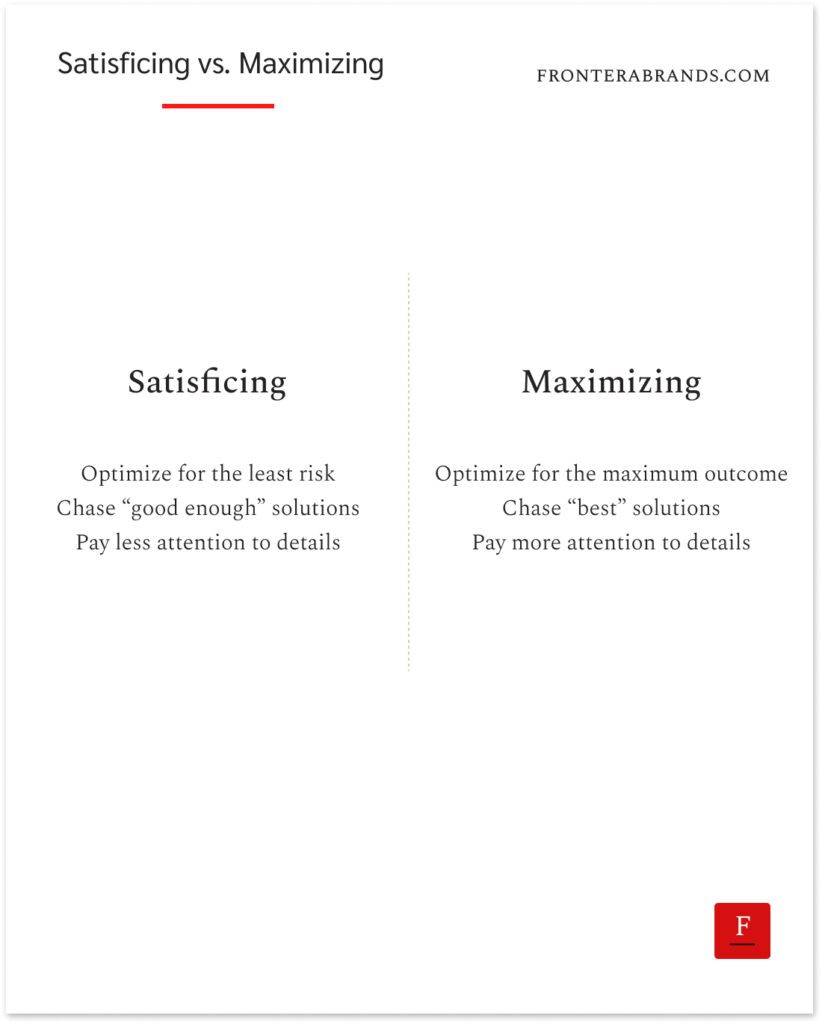In the 1970s, IBM was under attack from all sides.
They were the leaders in the business computers market.
And IBM System/360 computers were the iPhone of the 60s.
But just like any new technology, there was a rush.
Competitors were announcing their new breakthrough computers every month.
RCA, Digital Equipment Corporation, Xerox…
Some were faster.
Some had more memory.
And they all started advertising aggressively and chasing IBM’s customers.
Businesses had already got a taste of what they could achieve with computers.
So they were hungry for better ones.
IBM’s sales teams panicked.
They started receiving more and more questions from buyers about how their computers compare to others.
IBM engineers were already working on better models — but they were behind the market.
So how could they keep their dominant position?

Well, IBM’s sales team came up with a brilliant idea.
Instead of going into a spec race with the others, they decided to use one advantage they still had.
IBM was mainstream.
The majority of businesses were still using IBM computers, thanks to System/360’s past success.
So they decided to ignore technical comparison.
And they focused their pitches on showing how IBM was the safest choice.
They were the largest computer manufacturer.
They had a large team of engineers for support.
And the majority of the market used IBM.
If the buyers chose one of the new alternatives and something went wrong, how would the buyer explain that decision internally?
They’d be personally responsible for that risky choice.
And if something goes wrong after buying IBM?
Nobody would blame the buyer.
After all, they bought what everybody else was buying.
This framing worked like magic.
Buyers stopped comparing the specs to others.
Yes, maybe the other computers were better.
But was it worth the personal risk they’d take by choosing another vendor?
Their answer was no.
So they stuck with IBM.
And the famous saying became common among buyers: “Nobody ever got fired buying an IBM.”
Some say this phrase was the most effective marketing phrase of the century.
Even though IBM never directly used it in any advertising.

When people choose the least risky instead of the best
You’ve probably faced this at some point.
You have a better product/service than the competition.
You might even have a better price.
But most customers still choose that “safe choice” you compete against.
It’s frustrating.
We talked about why B2B buyers are even more emotional than consumers.
Stakes are higher in B2B.
Hence buyers act more based on emotions and become risk averse.
This risk aversion multiplies if their businesses are also at a risk-averse stage like large enterprises.
So buyers don’t look for solutions that will maximize their outcomes anymore.
They look for the least risky option that will be good enough for their needs.
Economist Herbert A. Simon called this behavior satisficing in 1956.
Rory Sutherland calls it defensive decision-making.

This behavior provides a big advantage for market leaders, especially if they know how to exploit it — like IBM in the 70s.
So if you are the IBM of your market category, what you have to do is clear.
But how can you fight it if you are a challenger?
Here are three ways:
1. Counter-position against the leader
We talked about counter-positioning.
Every strength brings its weaknesses.
So one way to challenge the leader is to find the weakness in their strength.
McKinsey sends you brilliant but inexperienced new graduates.
Starbucks is in good locations and has a nice ambience, but average coffee.
No matter how dominant, every leader has a weakness.
So if you want to go head-to-head against the leader of your category, you have to exploit that weakness.
And your brand has to stand for its opposite.
That means the villain in your brand narrative will be the market leader.
So you can become the obvious alternative.
2. Divide and conquer
Challenging the leader in a wide market category is difficult.
But you can make it easier for your business.
How?
By sacrificing some customer segments.
Only to become the “default choice” in a specific area.
Want to become the best sales training provider in the world?
Good luck, it’s tough.
But becoming the best sales training for B2B software sales teams?
Much easier.
The best thing about positioning for a specific segment is that you reduce the number of competitors.
So you can truly become “the safe option” in that space.
Because now, buyers will see that you have already worked with similar companies.
You understand their specific problems.
And you have tailored solutions to fix them.
So dividing the market and occupying a sub-category is a good way to make your brand the least risky choice.
3. Reduce the risk
If the main reason buyers choose leaders is risk aversion, there is one obvious thing you can do.
Reduce their risk.
How?
Provide post-purchase guarantees.
Put them on the contract.
And explain how you can reduce their risk through your messaging.
So you can handle their objections before they even come up.
Yes, every guarantee comes at a cost.
But not providing them can be more expensive.
So what are the potential risks for customers as a result of working with you?
Some of them might be related to outcomes.
Some of them might be about the issues that might arise.
Identify and mitigate them.
Make it easier for them to choose you.
–
Enjoyed this article?
Then you’ll love the How Brands Win Newsletter.
Get the “5 Mental Models to Differentiate Your Business” guide when you join. It’s free.
